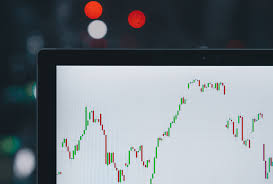Contract for Difference or CFD is a popular trading instrument that allows traders to take advantage of price movements in financial markets. In simple terms, a CFD is a contract between a buyer and seller that exchanges the price difference between the opening and closing price of an underlying asset. Understanding the basics of CFDs is crucial if you’re considering getting into trading. In this blog, we’re going to explore the fundamentals of CFD trading, helping you to understand how it works, the types of cfds available, and some key considerations before you dive in.
How does CFD trading work:
As previously mentioned, CFD trading involves two parties, a buyer, and seller. The buyer and seller agree to exchange the difference between the opening and closing price of the asset in question. This allows traders to profit from both rising and falling markets. For example, if you believe that gold is going to decrease in price, you could take a short position. If your prediction comes true, the seller will pay the difference between the opening and closing price, thus giving you a profit. Alternatively, you could take a long position if you think the price of gold will increase.
Types of CFDs:
There are many types of CFDs available, therefore it’s essential to have some knowledge of the different options available to you. Some of the most common CFD types include stock, cryptocurrency, commodity, and index. Stock CFDs are contracts that mirror the price movements of shares in a specific company, such as Tesla or Amazon. Cryptocurrency CFDs allow you to trade digital currencies such as Bitcoin or Ethereum. Commodity CFDs, which include gold, oil, and natural gas, involve trading futures contracts on commodity prices. Finally, Index CFDs enable you to trade the stock market as a whole, rather than just one company.
Considerations before Trading CFDs:
While CFD trading can be a lucrative opportunity, it also comes with risks that should not be ignored. CFDs are considered a leveraged product. This means that you are only required to put up a percentage of the full value of your position, leaving you open to greater potential gains and losses. It’s crucial to understand the risks before beginning trading, find a credible broker who will provide educational tools, and develop the right strategy that suits your goals and budget.
Additional Factors to Consider:
CFD trading involves not only dealing with the underlying asset but also with the counterparty that has issued the CFD contract. Therefore before selecting a broker, traders should consider the transparency and reputation of the broker/dealer. It’s essential to have a regulatory authority that guarantees the credibility of the broker and its trading practices. Moreover, having a good understanding of the terms and conditions to avoid hidden fees, spread charges, or commissions.
Conclusion:
In conclusion, understanding the basics of CFDs is vital before getting started in this type of trading. CFDs are a popular way of taking advantage of price moves in a range of financial markets, allowing you to start with small investments and access to global markets. Nevertheless, CFDs are complex instruments that require careful consideration of risk management and an appropriate trading strategy. Ensure you find a credible broker, with education and risk management tools, perform extensive research on the assets you want to trade, and limit your losses through implementing a stop-loss tool. Good luck in your CFD trading journey!




